Most of you will know that the ‘great visitation’ inscribed on the large obelisk in the Cemetery refers to the cholera outbreak of the late summer of 1849. This was the second time that true cholera had touched the townspeople of Hull. The 1849 epidemic was the worst outbreak of the disease that Hull ever suffered. As such memories of those grim days lingered in the collective consciousness.
Cholera
This may explain the letter that the Company received in early September 1893. Signed by the Town Clerk, R. Hill-Dawes ,it was friendly enough but requested information in relation to a resolution passed by the Cholera Sub-Committee the previous day. That there was in existence such a sub-committee shows the fear of cholera still reigning in Hull. It didn’t help that a new wave of cholera was sweeping across the world around this time.
Although it was now known how cholera was transmitted, via contaminated water, that didn’t offer immunity to the people of Hull. The reason for this was that many of the people were still dependent upon stand-pipes and that not all of the cesspits had been closed down. As such this letter landed on the the Cemetery Superintendent’s desk, dated the 6th September 1893. He reported it to his board of directors at the 3rd October Board meeting.

A Quick Response
As may be seen, the Town Clerk desired the Secretary’s ‘observations’ the very next day. as it was ‘of urgent importance’. The Secretary after having read the resolution on the other side of the letter knew this needed a response from the Board not just from him. The resolution, copied below, alludes to the cholera grounds in the cemetery.

Upon receipt of this letter the Secretary immediately informed the Chairman. The Chair carefully drafted a reply for Michael Kelly to send. In this reply the Chair refuted any tampering of the area where the cholera victims were laid to rest. This was a patch of ground comprising of parts of four compartments; 96, 97, 122, 123. This appeared to be where the majority of cholera victims were buried. But not all. If a family member died of the disease and that family had a family plot then that family member would have had the right to be buried there. There was also the mystery of plot 121 which I’ve written about before.
Why Panic Now?
So, on many occasions the ground that contained a cholera victim could have been disturbed. Why the panic now?
As mentioned earlier the Corporation was anxious due to the new pandemic, They were taking steps to not allowing cholera to come in via the back door so to speak. They needn’t have worried. Unlike such diseases as tetanus the cholera bacillus cannot persist in the ground unless it lives in the groundwater. After almost 50 years since the 1849 epidemic the likelihood of the cholera bacillus being active was extremely remote. But rational thought doesn’t come into it when dealing with a pandemic. We all saw that recently didn’t we?
The Reply
The chair’s reply is below, signed by Michael Kelly.

With this reply the matter appears to die a death. It never resurfaces in the minute books. We have no knowledge of whether any of the sub-committee availed themselves of the offer to visit the cholera ground.
Paranoia
Two points are apparent from this reply. One is that the paranoia that affected most of the Company’s board meetings during the period since the Borough Cemetery opened in 1862 were reaching an unhealthy peak at this time. The minute books are strewn with comments alleging that the Company was under attack from all and sundry. The message is that the Company was struggling to function and that cutbacks were necessary. Yet at the same time very healthy dividends were regularly paid to its shareholders. To square this cognitive dissonance it became necessary to claim that unfair methods were being used against the Company. This attitude continued until the the 1930’s when reality finally made the Company realise it no longer had the assets to contain trading. This was when it began to seriously look to liquidation but that is another story.
Colour Coding
The second point is perhaps more mundane but interesting nonetheless. You may have noticed that Kelly states that,
‘In the plan of the Cemetery all these Cholera Public Grave were inked Salmon Colour as a guide to the Officials’
This was true, at least in the first part of the Cemetery’s life. All grave spaces were assigned a colour. This was dependent upon the status of the grave space being used. The index of this system is shown below although Kelly noted at the top of the page that this system had not been used for some time.
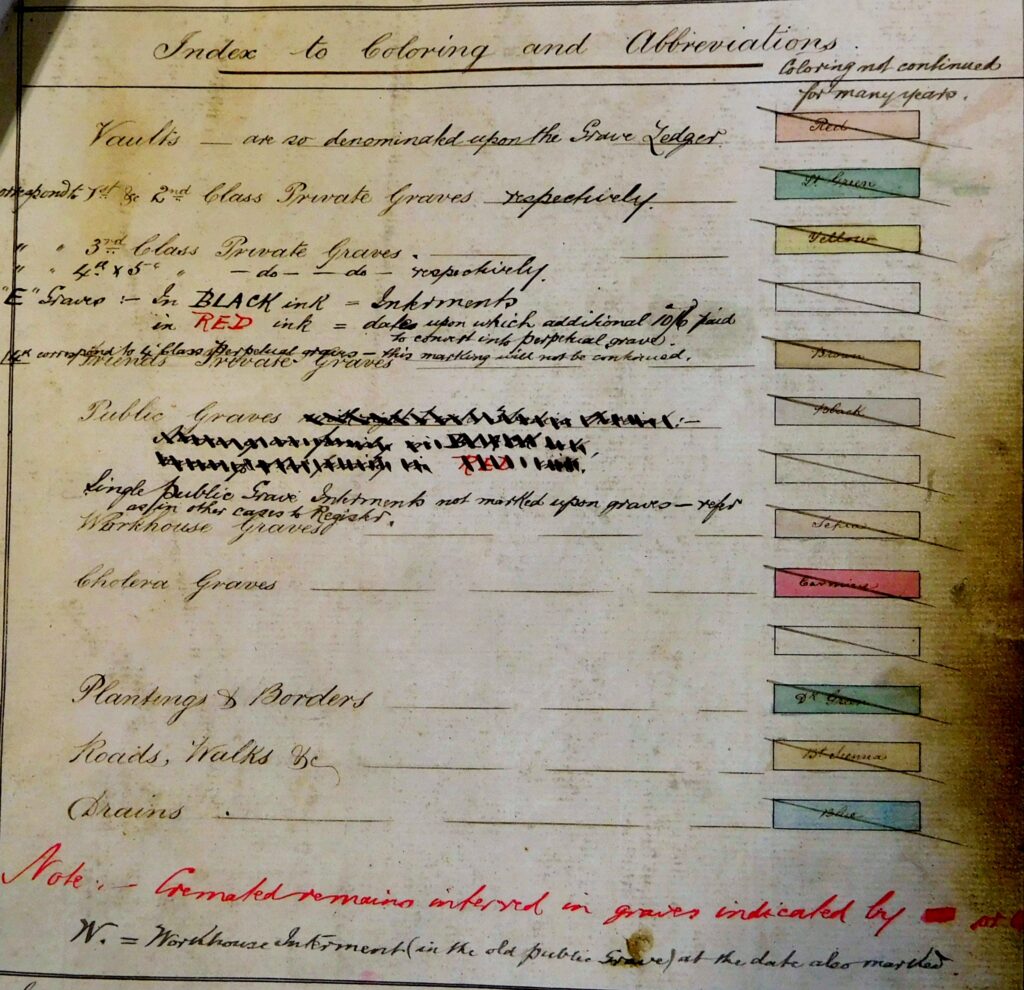
Compartment 102
So, for example if we look at compartment 102 we can see this system in operation. Note the large red square to the lower part of map. This corresponds to the large monument to William Hunt Pearson . Other examples of the second class of graves includes Harbord Harbord at the top of the image.
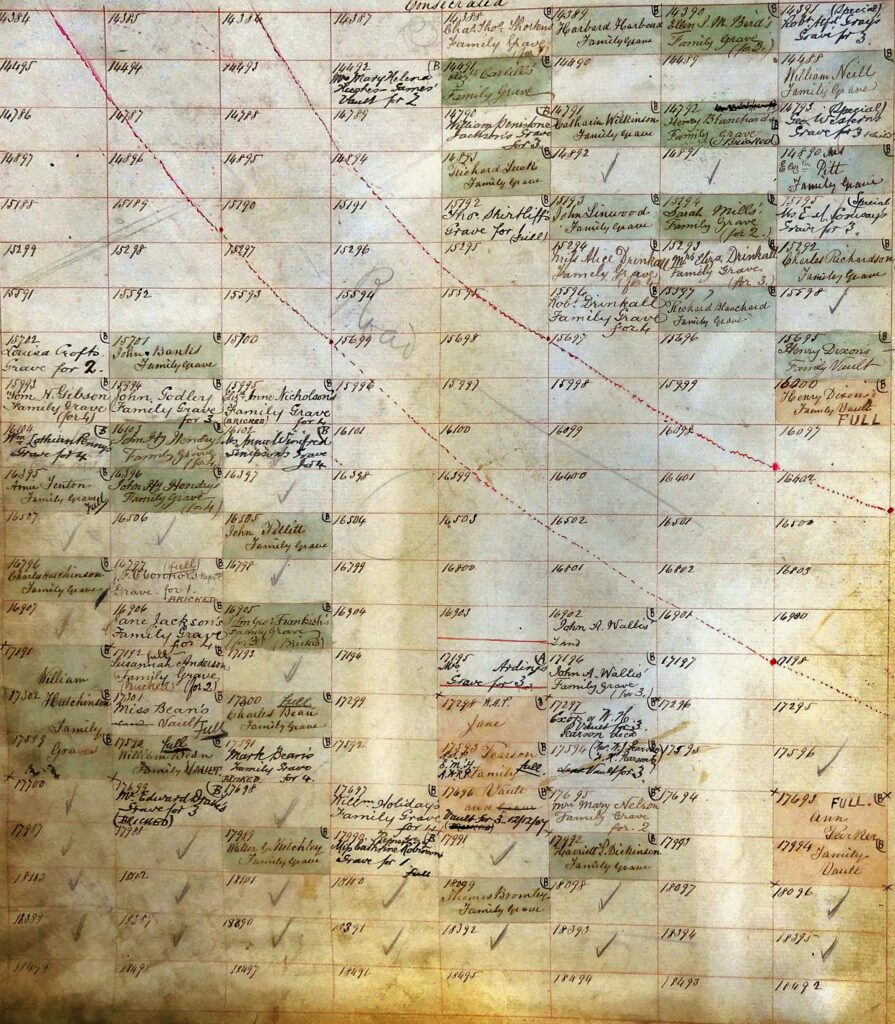
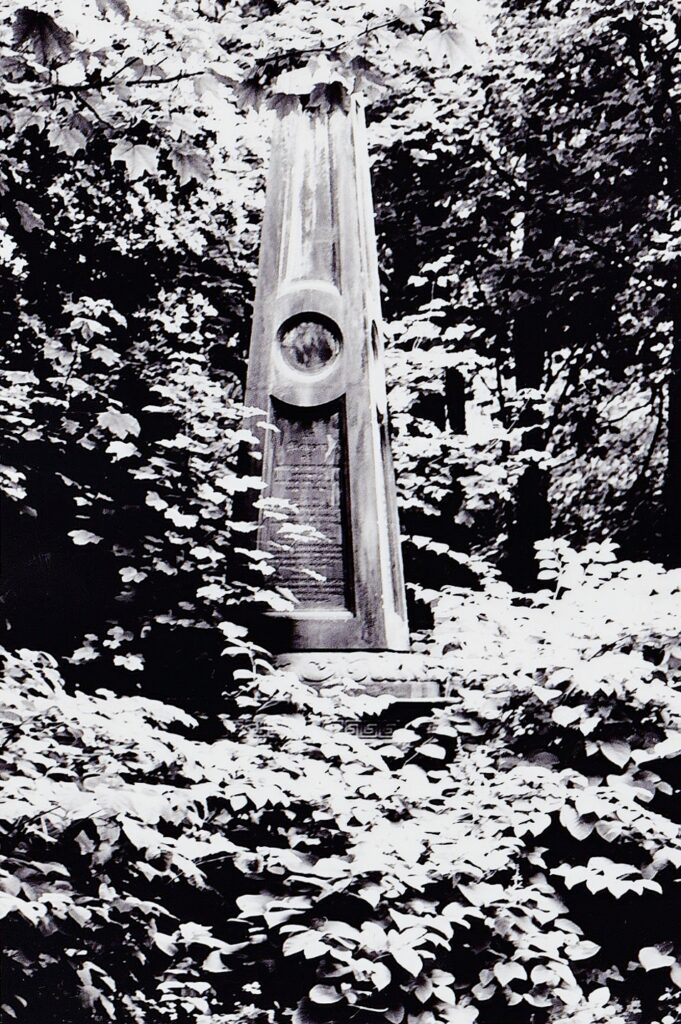
William Hunt Pearson’s monument as it was in the 1990s. Below is a more recent photograph.
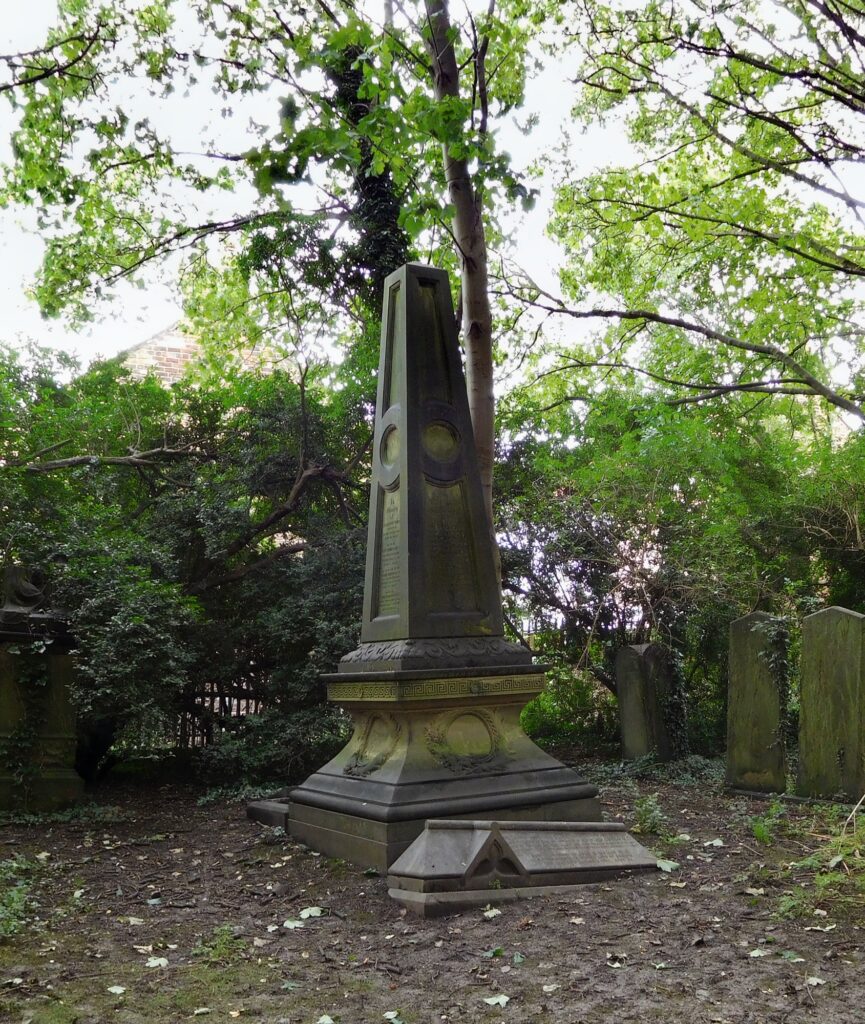
The Victorian Cult of the Funeral
In many areas of Victorian society you were ultimately judged upon your material wealth. Even in death equality did not reign. The rise of the funerary business and the memorialisation of all those who could afford it took off in this period. Poorer families would descend further into debt to give their family member a ‘good send-off’ mainly because it was expected of them. That the neighbours ‘would talk’ was still a feature of communities when I was a young boy in the 1950s. How much worse it must have been when the funeral industry was in its pomp and dictating what sort of crepe and the colour of linen that could be used depending upon your relationship to the corpse doesn’t bear thinking about.
The obelisk that adorns Pearson’s vault tells all and sundry that he was important because he was wealthy. And now you know that not only did he have a large monument but it stood upon a first class grave. vault That may have been some comfort to him and his family. The rites were observed and those attending the funeral would have been suitably assured that Pearson was a ‘great man’. However he was still as dead as those poor people in the workhouse plots and now, like them, he resides in a derelict cemetery where his first class status means nothing any longer.
Oh well, as Dylan sang, ‘That’s life and life only’. Or in this case death.

Pete Lowden is a member of the Friends of Hull General Cemetery committee which is committed to reclaiming the cemetery and returning it back to a community resource.

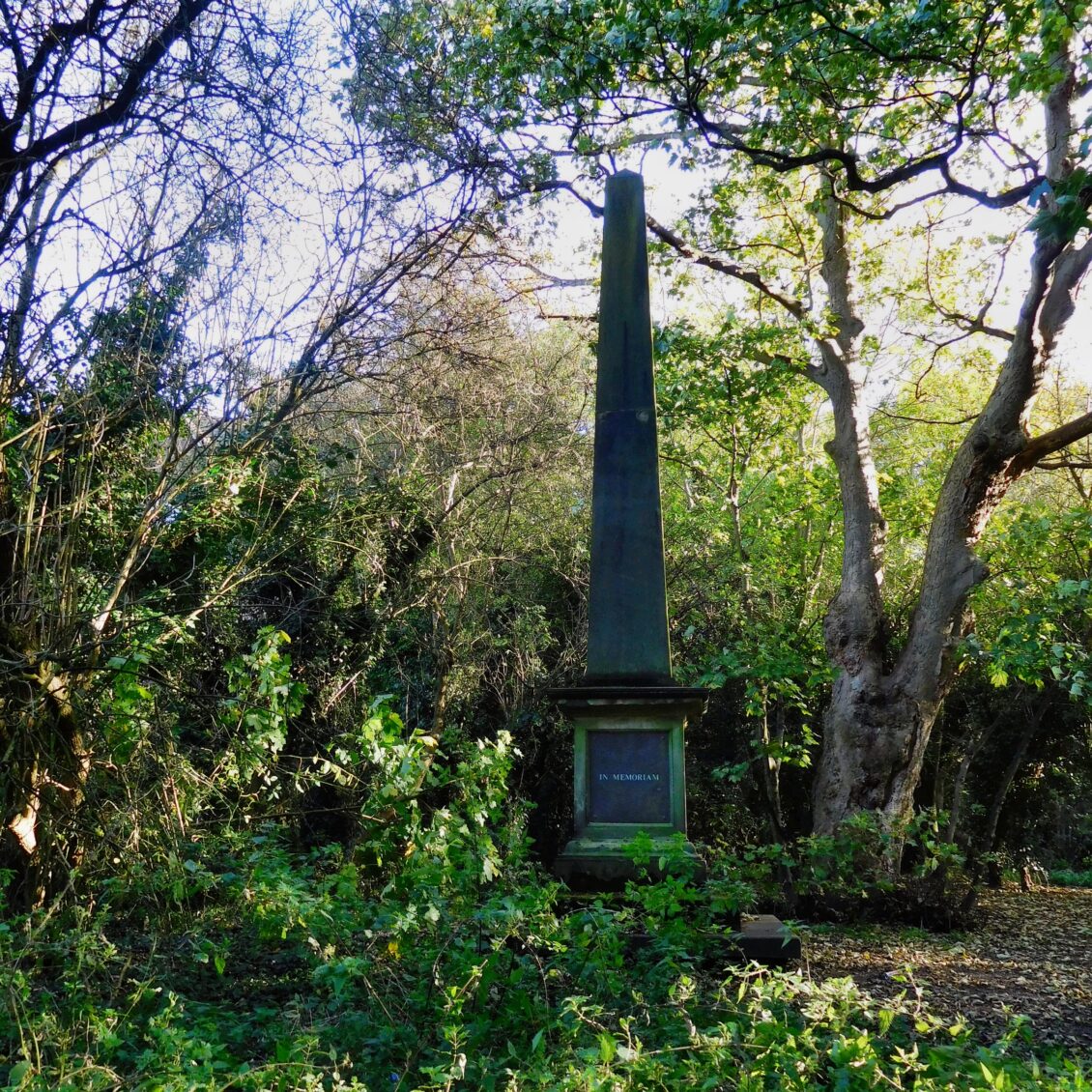
Interesting posts on the wildlife and the cholera debate so many years after it had abated. I suppose that we are looking at it with modern eyes, they maybe thought that it could stay in the soil for many years like anthrax.
Thanks Helen and Pete